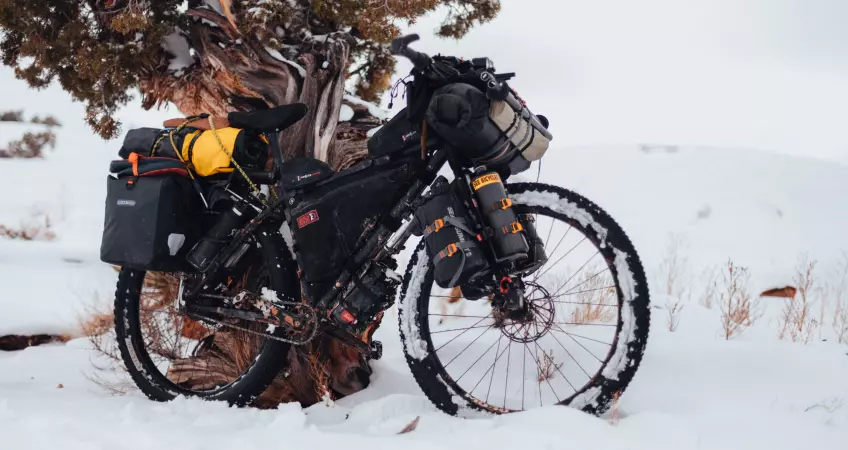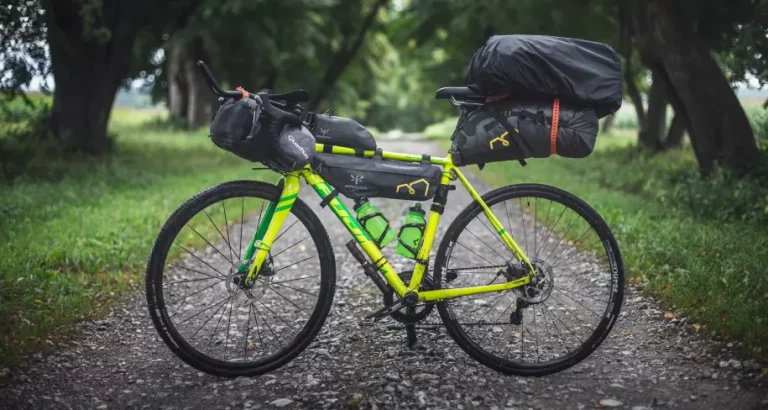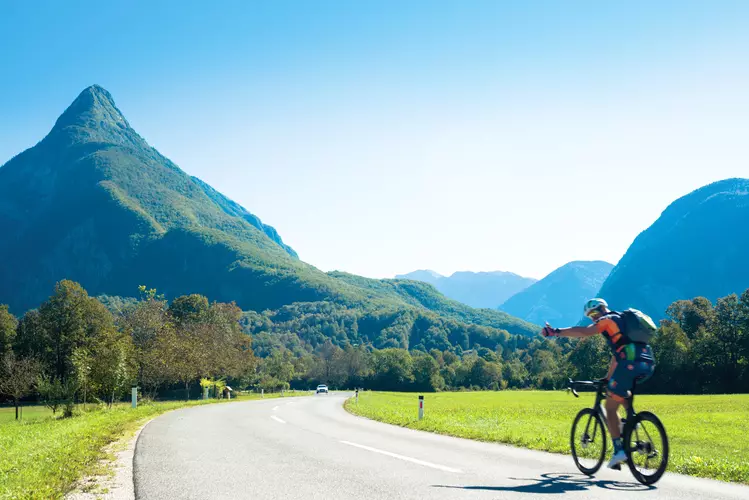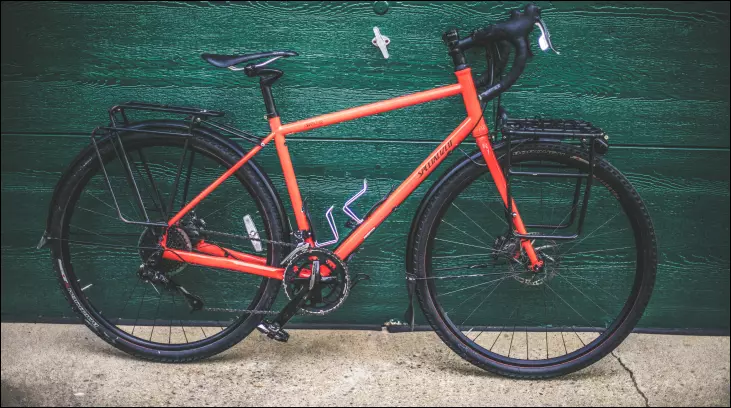Touring Bike Weight: Is It Important? Here’s the Answer!

When I was starting my bike touring journey I always wondered how much should my touring bike weigh cause I was used to road cycling, and I had no idea how much should my whole setup weigh.
And so many cyclists who are new to bicycle touring are wondering that as well.
That’s why in this post I will explain everything you must know when it comes to weight on a bike tour.
Table of Contents
What Is The Average Weight of a Touring Bike?
The first question that comes up is how heavy are touring bikes?
A touring bike typically weighs between 26 and 36 pounds (12-17 kilograms) when equipped with the racks, mudguards, and water cadges, but without any gear attached.
Usually, they’re a bit heavier than a normal bike due to their solid components, such as frame, wheels, racks, fenders, etc., because they need to withstand heavy loads without bending.
A touring bike’s weight can, of course, vary from manufacturer to manufacturer, some are designed to accommodate weekend rides, while others can support some extended periods.
It’s not the same thing as with road bikes. If you are a road cyclist your bikes weigh matter a lot more cause you want to be as much aerodynamic as possible.
On the other side with a touring bike, you won’t even notice the difference between a 26 and 36-pound bike.
How Heavy Is a Fully Loaded Touring Bike?
It is much more important how heavy your fully loaded bike is than how much it weighs on its own.
A fully loaded touring bike equipped with camping gear, bags, food, water, clothes, tools, and personal stuff, weighs between 55 and 110 lbs (25 – 50 kg).
Of course, there will be some instances of people going on a tour with 45 pounds (20 kg) fully loaded bikes or 130 pounds (60 kg) that they can’t even lift up.
Keep in mind that your weight will vary from time to time.
It is possible to overload your bike with two or three pounds more after you’ve done your groceries, or you just ate everything and your bike is much lighter.
How to Check the Weight of Your Touring Bike?
If you already have a touring bike and you want to check its weight I am going to show you two simple ways you can do that.
First and my favorite way is with a normal scale
To figure out the weight of your bicycle, first, weigh yourself (remember that number) then weigh yourself while holding your bike. Once you have finished, divide those two numbers, and you are done.
For example, if you weigh 170 pounds, and you and your bike together weigh 200 pounds, that means your bike weighs 30 pounds, easy maths.
The second way is with a luggage scale
If you already have a luggage scale at home this will probably be the better and more accurate way to measure your bike.
Simply attach it to your bike frame, lift it up, and that’s it.
But if you don’t have a luggage scale at home you can buy a cheap one from Amazon.
Ways to Make your Touring Bike Lighter
Now I’ll show you several ways that can make your bike lighter than usual and, of course, easier to ride.
Don’t pack too many unnecessary things. When I started my first bike touring journey I literally packed everything. Everything I can think of that may or may not help me on my adventure. Then I realized that every pound of unnecessary stuff will come to me at the first hill.
Since then I only pack things that are crucial. Dedicate a few minutes to really think about that. Do you really need those flip-flops or do you really need to carry all those extra spare t-shirts?
Use light-weight gear. Camping gear, tools, cooking stuff, bike parts, all those things can be pretty heavy when it all adds up. That’s why I recommend buying as much smaller or lightweight things as possible. If you have doubts about which item to pack, almost always pack the lighter one.
When it all compounds it can make a pretty significant difference.
Always use squeezable packaging. I know that this tip might sound strange but let me explain. For example, if you are riding in the summer and you need to pack a sunscreen always buy the one in squeezable packaging rather than in a plastic container.
As a result, you can squeeze the tube and gain a great deal of space in your panniers.
How to Distribute Weight on a Touring Bicycle?
Now that you know how to reduce the weight of your touring bike, next on the list is to learn how to distribute that weight.
Here is the best way you can load your touring bike to increase stability and balance during the rides.
When I’m packing my bike for a ride, I always follow this simple rule: the closer to the center, the better.
That’s what the laws of physics say, so I wouldn’t interfere.
Put all the lightweight stuff (phone, wallet, snacks, hat, knife, earphones) in your handlebar bag. All your tools, repair kit, some food, clothes, etc.) in a frame bag. And the biggest things (tent, sleeping bag, sleeping pad, stove, etc.) in your panniers or a saddlebag.
When you are packing your panniers try to put the heaviest things first and then other lighter stuff.
Also, you don’t want to get disbalance, so make sure you distribute the weight evenly on both wheels.
Does Bike Weight Really Matter for Bicycle Touring?
So many people are asking this same question again and again, and I will give you an answer right now.
Yes, bike weight matters but much less than you think.
When cycling you don’t just carry the weight of your bicycle you are also pushing your body, clothes, shoes, helmet, etc.

As you can see in this pie chart your weight makes up about 75% of the pie which is a much higher percentage than you might think.
When riding a bike that’s 1 to 2 kg lighter, you may feel a big difference but when you actually look at the graph it only reduces your weight by 1%.
I did my testing and I found out that the 1kg extra weight will add 1 to 2 minutes on a very steep ride and 15 to 25 seconds on a flat road.
I use the site called Bike Calculator to compare speed differences between my bike setups, it can also predict calories loss, weight loss, etc.
In summary, the bike weight is not as important as you think.
The next time you find yourself thinking about all those numbers just remember that a 1kg more will just add 1minute on a 100kg ride.
I hope this article was helpful!





